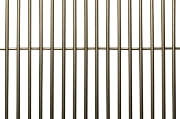 Although the Northern Irish conflict is one of the most heavily researched, it remains fertile ground for conflict studies. This is partly due to the emergence of the Irish language as a matter of contention in the post-conflict landscape. According to most commentators, the language largely disappeared in Northern Ireland sometime during the 1960s or 1970s but has since undergone a politicized revival. Language has also been the site of conflict in Wales, with considerable sociopolitical tension surrounding its status there since the 1960s, when its state of decline became apparent. This article investigates the Irish and Welsh languages, and their significance as a political tool for those incarcerated in Ireland or Wales.
Although the Northern Irish conflict is one of the most heavily researched, it remains fertile ground for conflict studies. This is partly due to the emergence of the Irish language as a matter of contention in the post-conflict landscape. According to most commentators, the language largely disappeared in Northern Ireland sometime during the 1960s or 1970s but has since undergone a politicized revival. Language has also been the site of conflict in Wales, with considerable sociopolitical tension surrounding its status there since the 1960s, when its state of decline became apparent. This article investigates the Irish and Welsh languages, and their significance as a political tool for those incarcerated in Ireland or Wales.
Jailtacht
A variety of the Irish language was used as a tool of resistance in HMP Kesh from the 1970s up until the peace process in the 1990s. 'Jailtacht' — a portmanteau of 'jail' and 'gaeltacht' — was spoken by men imprisoned without trial. An important figure in Jailtacht was Bobby Sands. Sands entered prison with very little knowledge of the Irish language but — like many of his fellow prisoners — gradually learnt the language during his time in prison. The language was partly picked up through Irish language classes, which were provided to inmates up until 1976, when the dormitory-style accommodation of the 'cages' was replaced by the more cellular H-blocks. Prisoners were no longer allowed to freely associate with each other, or to arrange their own activities, and inmates were now treated like any other type of criminal, and made to wear uniform.
In response to the enforced changes to their living conditions, prisoners embarked upon a series of protests. These included the 'blanket' protest, with prisoners refusing to wear prison uniform. As the protests escalated, the prisoners discovered the utility of Irish as a covert means of communication with each other, with the prison warders largely speaking only English. Teaching and learning the language also helped to maintain morale. While the arranging of language lessons was no longer permitted, the prisoners developed unconventional means of passing on knowledge. Lessons were shouted from cell to cell, and inscribed on cell walls using pencil leads smuggled in alongside prohibited materials on the Irish language. These unusual methods of language-learning led to the development of Jailtacht, which prisoners came to consider much more than just an argot, identifying with it and becoming dependent on it in order to express themselves. While many of the prisoners who spoke Jailtacht have been released, their experiences of speaking this particular variety of the Irish language have played a big part in the ongoing campaign for an Irish Language Act. Today, around 65,000 people in the region are fluent in the Irish language.
Carchar
The Welsh story of preservation of a native language is similar to that of Jailtacht. Beginning in the 1960s, language activists brought the Welsh language with them to prison, and used it as a form of protest through creative writing. An important example of this genre is Meg Elis's Carchar, meaning 'prison'. Carchar is a collection of short-stories published in 1978, and reflects the role of protestors' incarceration in the ongoing language protests. Crucial to these protests was non-violence, which Cymdeithas yr Iaith Gymraeg (The Welsh Language Society) insisted on. The Gymraeg's approach to protest revolved around the committing of criminal transgressions, with members submitting themselves to incarceration.
For the Gymraeg, imprisonment is seen as a moral imperative, something attested to in the work of Elis and other prison writers such as Angharad Tomos — notably her fictionalized prison diary Yma o Hyd (Still Here) — and Menna Elfyn, who published a number of volumes of poetry including Ystafelloedd Aros (Waiting Rooms), Tro'r Haul Arno (Turn the Sun On) and Cell Angel. Many proponents of the Gymraeg point to these tactics as crucial in the successes of Welsh language campaigning, such as the establishment of S4C, the Welsh-language television channel. However, other forms of protest have been used in a bid for more recognition of the Welsh language. Former Plaid Cymru leader Gwynfor Evans's threats to embark on a hunger strike were crucial in forcing the Conservative government of the time to implement its election pledge to found S4C. Others went as far as deploying violent tactics in an attempt to achieve their aims, with groups such as Meibion Glyndwr conducting arson attacks on English-owned holiday homes.
Today, there are around 562,000 Welsh speakers in Wales.
Conclusion
The silencing of prisoners is often seen as a key function of the prison system. However, the story of the Jailtacht and Elis's Carchar demonstrate the futility of such a task, with the prison cell as the medium through which protest is expressed. In the Irish case, a unique form of the Irish language was created, impacting upon popular culture in Ireland well beyond the prison cell. For Wales, the incarcerated voice of the writer-activist had an energizing effect on the Welsh language in all areas of Welsh life.
Recommended reading
Babington, Anthony. 1968. The Power to Silence: A History of Punishment in Britain. London: Maxwell.
Bourdieu, Pierre. 1991. Language and Symbolic Power. Cambridge: Polity Press.
Mac Giolla Chríost, Diarmait. 2012. Jailtacht: The Irish Language, Symbolic Power and Political Violence in Northern Ireland, 1972-2008. Cardiff: Cardiff University of Wales Press.
Mac Giolla Chríost, Diarmait. In press. Branwen's Starling: Welsh Writing, Political Action and Incarceration. Basingstoke: Palgrave Macmillan.
Tilly, Charles. 2003. The Politics of Collective Violence. Cambridge: Cambridge University Press.
Whyte, John. 1991. Interpreting Northern Ireland. Oxford: Clarendon Press.




